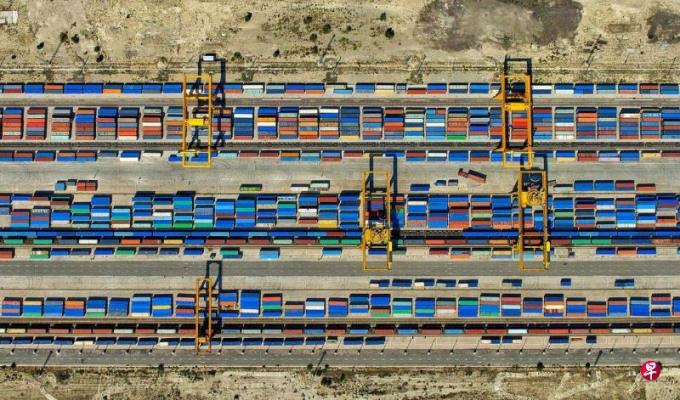
China announced the latest import and export data on Thursday (September 7). In August, exports (pricing at US dollars) fell by 8.8%year -on -year, and fell for four consecutive months, but the decline in the previous month narrowed.Imports also fell 7.3%year -on -year, which was also better than last month.
The data released by the General Administration of Customs on the official website shows that the export volume in August was US $ 284.87 billion (about S $ 388.82 billion).Exports declined in July to a new high since March 2020.
In August, the import volume continued to fall to 216.51 billion US dollars, but it was better than the decrease of 12.4%last month.
Bloomberg reported on the same day that the above data shows that when China is trying to restore growth, the worst period of some economic fields may have passed.
He Weizhen, an economist of Bank of China, said in an interview with Lianhe Morning Post that the narrowing part of China's import and export in August was due to the low base of the same period last year. As the base effect increased, the trend of narrowing and narrowing was estimated to be in the remaining time this year.continued.
He Weizhen pointed out that it is even more noteworthy that the strong growth of the import volume of commodities in August shows that the decline in import and export may have bottomed out, and it also indicates that after the sharp deterioration since the second quarter of this year, China's economic prospects have returned.stable.
China Customs data shows that the import of commodity imports in August, especially in energy imports, has increased significantly. Crude oil imports increased by 30.9%compared with last year to 52.804 million tons, setting the third high monthly crude oil import record in history.Natural gas imports also increased by 22.7%compared with the same period last year.
He Weizhen judged that China's economic situation will not be weakened, but it still faces many unfavorable factors, including high interest rates, geopolitics tensions, and the sustainable debt crisis of domestic real estate agents in China.
China has been weakening abroad in the past few months, foreign trade data has continued to decline, and the foreign trade structure has also changed.
The US Census Agency released data on Wednesday showing that in the past 12 months of July this year, China ’s average proportion of US commodity imports has fallen to 14.6%, the lowest level since 2005.
With the continuous decline in China's imports from China this year, Southeast Asia has replaced the former to become China's largest export market.According to the report of the Dahua Bank, China ’s exports to Asianan from January to August this year were 15.5%, followed by the European Union and the United States.
He Weizhen pointed out that this is the result of the transfer of geopolitical tensions and the transfer of supply chain, and it will also be a challenge facing China in the next few years.She said that policy makers have shifted more growth to domestic drivers, including stimulating domestic demand and strengthening self -sufficiency in key manufacturing components.




